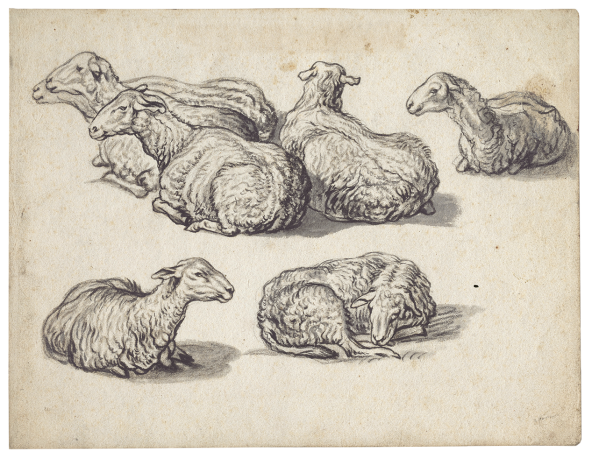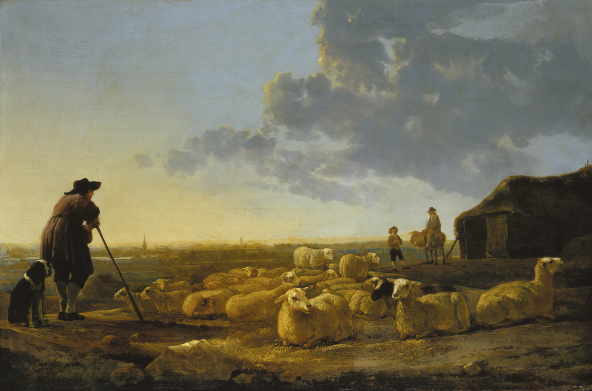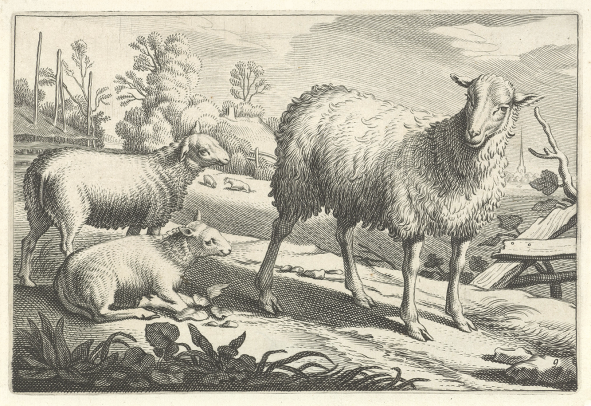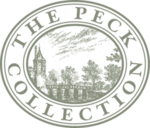Choose a background colour
Aelbert Cuyp, Dutch, 1620-1691: Five Studies of Recumbent Sheep, c. 1646
Black chalk, oiled black chalk, and gray wash on paper.
6 1⁄4 × 7 7⁄8 in. (15.8 × 20 cm)
None.
- Chain Lines:
- Vertical, 23 – 24|16
- Watermark:
- Coat-of-arms, indistinct.
- Provenance:
Probably Aarnoud de Lange, 1740 – 1803; his sale, Van der Schley et al., Amsterdam, 12 December 1803, Kunstboek E, no. 34 (sold to Gruiter); sale, Lepke, Berlin, 14 March 1905, lot 122 (sold to Boerner); Anton Eymer, 1834 – 1917; sale, Prestel, Frankfurt, 4 December 1917, lot 442; I. Q. van Regteren Altena, 1899 – 1980, Amsterdam (Lugt 4617, stamp on verso); thence by descent; his sale, Part I, Christie’s, London, 10 July 2014, lot 53; Sheldon and Leena Peck, Boston (Lugt 3847); gift to the Ackland Art Museum, inv. no. 2017.1.18.
- Literature/Exhibitions:
J. Giltaij in Rotterdam, Paris & Brussels 1976 – 77, no. 44; J. G. van Gelder in Dordrecht 1977 – 78, no. 63; Chong 1992, 315, under no. 68; Jonker & Bergvelt 2016, 59, under no. DPG4.
- Ackland Catalogue:
- 2017.1.18
Aelbert Cuyp created this study sheet of resting sheep directly from life using black chalk, touches of diluted ink, and chalk mixed with seed oil, skillfully applied in bold accents. It likely belonged to one of his many sketchbooks, now dismantled, kept in his studio for use in finished compositions. For instance, three highly individualized sheep from this drawing are featured in a landscape painting depicting a shepherd and his flock, now in Frankfurt. The Peck sheet and another in Berlin appear to be the artist’s only surviving study drawings of sheep, making it an especially rare example among Cuyp’s prolific artistic production.
The exceptionally well-preserved media on this sheet brilliantly convey Aelbert Cuyp’s original range of tone, from his richly dark oiled-chalk accents to his swift, subtle additions in gray wash. With obvious relish, Cuyp imparted a sense of individual personality to many of these sheep, which were obviously studied from life. Traces of an outline of a sixth sheep are visible in the upper right corner, but it was abandoned, perhaps for reasons of space.
This drawing relates closely to another of nearly identical size in Berlin depicting seven recumbent sheep in a similar variety of postures Fig. 25.1.1

Aelbert Cuyp, Group of Seven Sheep. Black chalk, oiled black chalk, and gray wash on paper, 154 × 203 mm. Berlin, Kupferstichkabinett, inv. no. KdZ 5314.
bpk Bildagentur/Kupferstichkabinett, Staatliche Museen, Berlin, Germany/Volker-H. Schneider/Art Resource, NY
Both likely came from one of Cuyp’s many sketchbooks, though none remain intact today. The majority of his surviving drawings are finished landscapes in color that he no doubt made for the collectors’ market, many of which reveal his travels around the Rhine and other regions in the Netherlands and Germany.2
Study sheets like these, however, compose an important part of his oeuvre, since a number of the animals he drew subsequently made their way into his paintings. Cuyp often combined multiple such studies for the creation of his paintings, integrating various figures or animals within a landscape from one of his journeys.3
The present sheet provided source material for Cuyp’s painting in Frankfurt depicting a shepherd and his flock. The three sheep in the foreground have been lifted directly, though somewhat rearranged, from the leftmost three in the drawing Fig. 25.2.4

Aelbert Cuyp, Flock of Sheep in a Pasture, c. 1645 – 55. Oil on panel, 49.3 × 74.3 cm. Frankfurt, Städel Museum, inv. no. 1107.
bpk Bildagentur/Städel Museum, Frankfurt am Main, Germany/Ursula Edelmann/Art Resource, NY
Although he worked in a variety of genres, Cuyp is particularly known for his sun-drenched landscapes that disclose a peaceful and even dreamy world, a type that was popular with his elite Dutch patrons and even more so with British collectors and artists in the eighteenth century.5
Sheep traditionally play a quintessential role in such idyllic imagery, as do the requisite shepherd and his flock. In Cuyp’s case, however, most of his animal studies depict cows, a proportion that was in keeping with his overwhelming preference for cattle in his paintings. This sheet and the one in Berlin appear to be his only surviving study drawings of sheep.6
While Cuyp almost certainly kept these studies for his own use, he did issue some related etchings by his own hand (though only of cows) that were probably based on similar studio-held drawings.7
In the issuing of his animal study drawings in print, Cuyp possibly took inspiration from his own father, Jacob Gerritsz Cuyp (1594 – 1652), who designed an innovative print series devoted specifically to such animal studies, the Diversa Animalia Quadrupedia from 1641 Fig. 25.3. 8

Jacob Gerritsz Cuyp, Pasture with a Sheep and Two Lambs, from the series Diversa Animalia Quadrupedia, 1641. Etching on paper, 130 × 195 mm. Amsterdam, Rijksmuseum, inv. no. rp-p-1889-a-15086.
Rijksmuseum, Amsterdam
The dating of Cuyp’s paintings and drawings has proven difficult.9
Jan van Gelder and Ingrid Jost suggested a date of circa 1646 – 48 for the present work when it was exhibited as part of the Van Regteren Altena Collection, based on the then-estimated date of the Frankfurt painting in the early 1650s.10
In his dissertation on the artist, Alan Chong suggested that the painting might instead be the work of Cuyp’s devoted pupil and imitator, Abraham van Calraet (1642 – 1722), noting in particular that “the sheep are awkwardly defined and sit clumsily in the landscape.“11
In the Städel’s collection catalogue, however, León Krempel argued strongly in favor of restoring the authorship to Cuyp and widened, in the process, the painting’s date range to circa 1645 – 55.12
Neither Chong nor Krempel seem to have been aware of the Peck drawing, then in the possession of the heirs of Van Regteren Altena, but its clear relationship to the Frankfurt panel argues in favor of an attribution of that painting to Cuyp. It remains possible that Calraet or some other pupil had access to the master’s drawings, but whatever slight clumsiness the sheep in the painting possess might best be ascribed to their literal reproduction from the drawing. Van Gelder suggested that another painting by Cuyp made use of this drawing, a landscape in Dulwich dated circa 1641, though the relationship in this case is far less clear.13
Cuyp seems to have given up his trade around 1660 shortly after he married into the patrician class. One likes to imagine that he continued to appreciate his own stock of drawings for the remaining thirty years of his life, especially given the precision and beauty that one sees here. The artist’s early biographer, Arnold Houbraken (1660 – 1719), who grew up in Dordrecht and probably knew him personally, reported that after his death no drawings or models by any other artist were to be found in his collection, a testament, so he wrote, to Cuyp’s commitment to study only from nature.14
End Notes
Bock & Rosenberg 1930, vol. 1, 112, no. 5314.
For an overview of Cuyp’s drawings, see E. Haverkamp-Begemann in Washington, London & Paris 2001 – 02, 75 – 85 (focusing more on the landscapes); as well as the entries on the drawings by W. Kloek in idem, 214 – 91; and the entries by J. G. van Gelder in Dordrecht 1977 – 78, 112 – 77. Jan Leja is preparing a catalogue raisonné of Cuyp’s drawings based on the previous research of Van Gelder and Ingrid Jost begun in the 1960s, and furthered by Haverkamp-Begemann.
For an overview of Cuyp’s use of drawings for his paintings, see A. K. Wheelock in Washington & Paris 2016 – 17, 194 – 201, nos. 81 – 87; and P. Schatborn in Amsterdam & Washington 1981 – 82, 120 – 22.
Krempel 2005, 96 – 100; and Reiss 1975, 169, no. 126. The relationship between the drawing and painting was first pointed out by J. Giltaij in Rotterdam, Paris & Brussels 1976 – 77, 26 – 27, no. 44.
A. Chong in Washington, London & Paris 2001 – 02, 35 – 51.
With thanks to Jan Leja for confirming this point.
Hollstein, vol. 5 (Aelbert Cuyp), nos. 1 – 6; see C. S. Ackley in Boston & St. Louis 1980 – 81, 207 – 08, no. 140.
Hollstein, vol. 5 (Jacob Gerritsz Cuyp), nos. 11 – 23.
For an attempt at a chronology of Cuyp’s paintings, see Reiss 1975, 7 – 12; and the remarks in Chong 1992, 253 – 62. For a rough chronology of Cuyp’s drawings, see E. Haverkamp-Begemann in Washington, London & Paris 2001 – 02, 75 – 85.
Rotterdam, Paris & Brussels 1976 – 77, 26 – 27, no. 44 (note 2, citing a 1976 letter from Van Gelder & Jost); the suggested date of the painting having just been published in Reiss 1975, 169, no. 126.
Chong 1992, 448, no. C7.
Krempel 2005, 96 – 100.
Reiss 1975Van Gelder in Dordrecht 1977 – 78, 158 – 59, no. 63. For the painting in Dulwich, see Jonker & Bergvelt 2016, 59 – 60, no. DPG4 (with a date of circa 1641); Chong 1992, 314 – 15, no. 68; and Reiss 1975, 75, no. 42 (with a date of circa 1646). While the Dulwich painting indeed appears to be in Cuyp’s early style, Jonker and Bergvelt’s suggested date of circa 1641 is apparently based on Cuyp’s presumed trip to Rhenen that year, a drawing from which he used for the background. The panel could plausibly be placed a few years later. For a discussion of the drawing of Rhenen used for the background (Haarlem, Teylers Museum), see Plomp 1997, 116 – 17, no. 98.
Houbraken 1718 – 21, vol. 1, 249.
